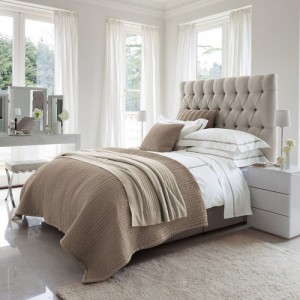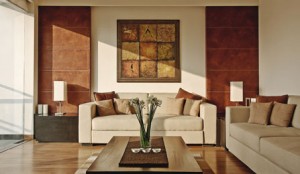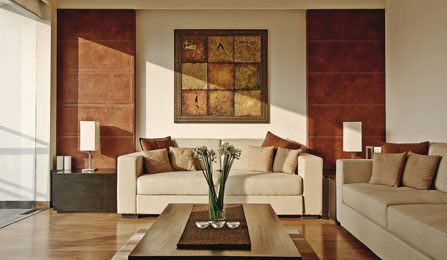There is no denying how powerful color is or the significant impact it has on our everyday lives. When it comes to design, the key is to manipulate color in such a way that you can create desired moods.
The science behind the effects different colors have on us is sold and is reinforced day-in and day-out through marketing and businesses we interact with every day.
Here are some ways you can use color to your advantage:
Balanced

Finding balance is key for leading successful, fulfilling lives and the design of our homes plays a critical role in starting (and ending) our days on an even keel.
You can use color to create balance by incorporating a complimentary color palette along with varying shades of those selected colors throughout the space. This forces the perspective of balance because there is a calming color to offset every vibrant one.
While not directly related to color, incorporating different textures and materials greatly enhances the balanced effect a room can deliver. If you’re a bit apprehensive about experimenting with colors, neutral color schemes (like the one in the bedroom pictured to the left) deliver balance better than any other arrangement.
Energetic
Bringing energy into your home is as simple as selecting the proper colors. The appropriate question to ask, however, is this: how much energy do you really want your rooms to generate?
Going with colors and patterns that are too vibrant and busy is a common occurrence. This is especially true when it comes to children. Not being able to fully manage their emotions, these bold colors often have negative effects. This is because the children are always being stimulated.
To avoid this, consider putting the brighter hues and glossier finishes in common areas and use more subdues shades and flatter finishes for children’s bedrooms.
Warm

If you’re looking to create a warm and inviting space in your home, going with earth tone colors are a good place to start.
The color wheel, the basis for which all colors can be found, separates color (among other ways) into warm and cool colors.
Warm colors typically include red, orange and yellow. Which are also the colors of fire. Coincidence? Not at all. Warm colors are also known for their ability to advance, or feel like they’re moving toward you. When applied to walls, it can make a room feel comfortable because the walls feel closer.
There are, literally speaking, thousands of shades of warm colors ranging between red, orange and yellow. This includes the colors created when mixing with each other or with whites (think browns, tans, etc.).
—
So, the next time you’re redesigning a room, put a little more thought into the color choice. While it is important to pick a color you like, it may serve you better in the long run to determine a mood you want a room to create and find a color you like that falls within that desired mood.

